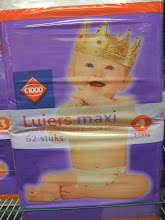 The contact sheet was a bit gray, so I added a filter and then added time to compensate for it.
Aperture: 8
Seconds: 130
Filter: 2
The contact sheet was a bit gray, so I added a filter and then added time to compensate for it.
Aperture: 8
Seconds: 130
Filter: 2
Aperture: 8
Seconds: 160 + 20 seconds intervals
Filter: 2
 This was still too light so I did another test strip at an even higher time.
This was still too light so I did another test strip at an even higher time.Aperture: 8
Seconds: 300 + intervals of 30
Filter: 2
 Then I tried a full print at 590 seconds.
Then I tried a full print at 590 seconds.
Aperture: 8
Seconds: 590
Filter: 2

Then, I forgot that I had done a large print already, so I tried another full print based off of the test strip's settings.
Aperture: 8
Seconds: 390
Filter: 2
Then I wanted more black in my print without so much time, so I opened up m aperture a bit and left the time the same.
Aperture: 5.6
Seconds: 390
Filter: 2









 This is an example of image taken using a high-speed flash to get a freeze-frame effect.
This is an example of image taken using a high-speed flash to get a freeze-frame effect.



 This was too light, so I did a test strip of longer times.
This was too light, so I did a test strip of longer times. This was still too light and also too gray, so I increased my filter, closed my aperture, and increased my time.
This was still too light and also too gray, so I increased my filter, closed my aperture, and increased my time. This was too dark, so I did another test strip at lower times.
This was too dark, so I did another test strip at lower times. Since the last strip was still too dark, I did a final print at an even lower time.
Since the last strip was still too dark, I did a final print at an even lower time. For the next print, I reduced my filter, and left the other settings the same.
For the next print, I reduced my filter, and left the other settings the same.

 This was still gray and a bit dark, so I closed my aperture and left the times the same so it would be a bit lighter.
Aperture: 4
Seconds: 20-40-60-80
Filter: 5
This was still gray and a bit dark, so I closed my aperture and left the times the same so it would be a bit lighter.
Aperture: 4
Seconds: 20-40-60-80
Filter: 5 Then I did a final print at 75 seconds.
Aperture: 4
Seconds: 75
Filter: 5
Then I did a final print at 75 seconds.
Aperture: 4
Seconds: 75
Filter: 5





